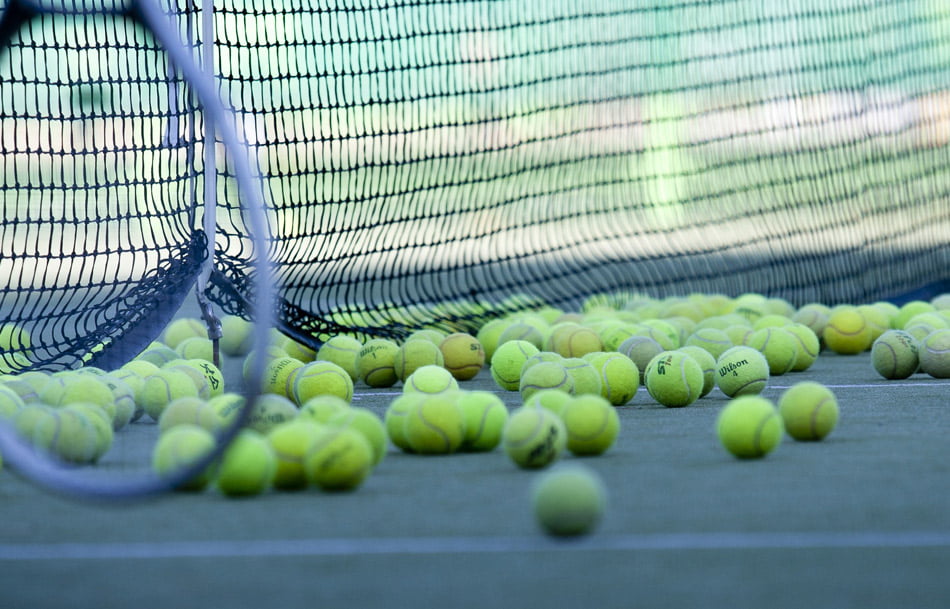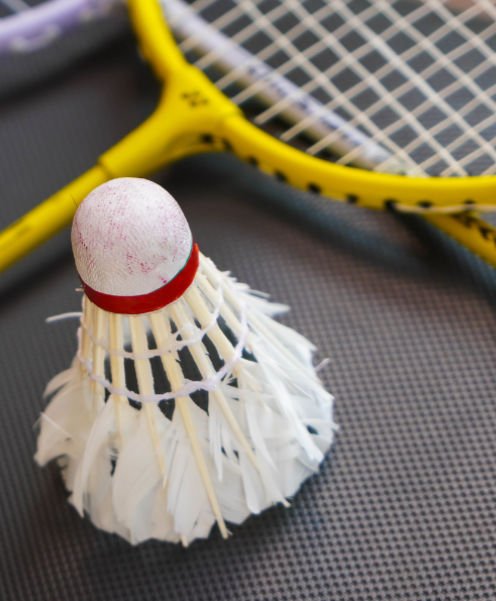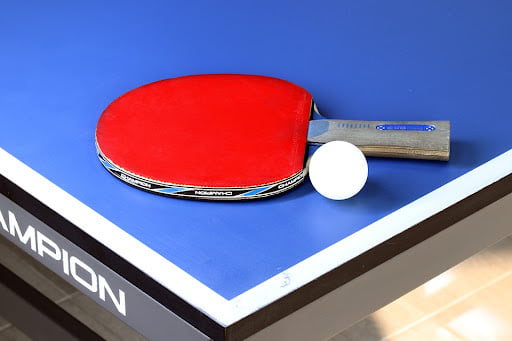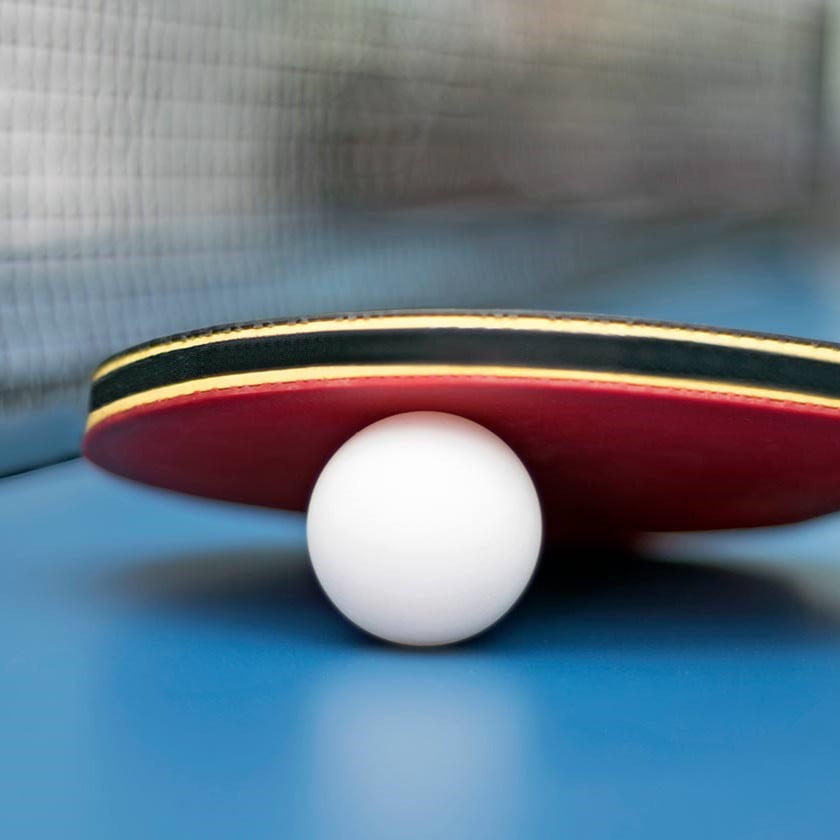
Racket sports involve strategy as well as strength and are an excellent workout for both body and mind. As well as being a great way to keep fit, have fun and socialise, racquet (or racket) sports are also a great way to improve coordination and strengthen joints and muscles whilst maintaining agility and flexibility.
Bluecoat Sports now offers badminton, squash, tennis and table tennis sessions for both juniors and adults; these are available to members and non-members. Also on offer is professional Squash coaching from club coach Kit Pearman for both Juniors and Adults. Don’t want to invest in equipment until you’ve tried it? It’s not a problem; we’ve got plenty of rackets, balls, and shuttlecocks available to use!
Not a gym member but would like to try your hand at badminton, squash or tennis? Why not trial our racket-only memberships and enjoy unlimited access to our state-of-the-art courts? Courts are available Monday to Thursday 6:30am-10:00pm, Fridays 6:30am t0 8pm and Saturday and Sundays 7am to 6pm.
Badminton
Indoor sport – suitable for 2 -4 players
The most common forms of competitive badminton are ‘singles’ games (one player per side of the net), ‘doubles’ (two players per side of the net) and ‘mixed doubles’ (two players of mixed gender per side of the net). Casual forms of the game are often played in outdoor settings such as parks or beaches, whilst formal games are played on an indoor badminton court.


Badminton equipment
Badminton requires very little equipment; in fact, all you need are rackets, shuttlecocks and suitable footwear. The proficiency of the user determines the balance point, flexibility, weight and grip size of a badminton racket.
Likewise, shuttlecocks are available in a range of materials, which determine their flight path quality, speed, consistency and ultimately, the playing level of the user. All a bit confusing? Don’t worry; you can borrow any equipment you may need, and we’ll be happy to help you choose the right rackets and shuttlecocks based on your proficiency.
Outline of badminton rules
In its simplest form, the aim of badminton is to hit the shuttlecock over the net with your racket, landing it in your opponent’s half of the court. This is known as ‘winning a rally’.
Unlike tennis or squash, the rally (succession of back-and-forth shots between players) ends when the shuttlecock hits the floor. A point is scored from every serve and awarded to the winner of the rally, with games typically played up to 21 points. An in-depth view of the official 2021 rules of badminton can be viewed at the Badminton World Federation.
Health and fitness benefits of badminton – areas of body worked
As well as improving cardiovascular fitness, agility, reaction speed, and hand / eye coordination, badminton also works the following muscle groups:
- Lower leg; gastrocnemius, soleus, anterior tibialis.
- Upper legs and hips; gluteals, hamstrings, quadriceps.
- Hip; gluteals, adductors and abductors, hip flexor.
- Shoulder girdle; latissimus dorsi, teres major, pectorals, deltoids.
- Core muscles; rectus abdominus, obliques, spinal erectors.
- Forearm and upper arm; wrist flexors and extensors, biceps and triceps.
How to get started playing badminton
Badminton can be enjoyed by people of all ages and abilities. Our badminton evenings, run by club coach Kit Pearman, are an excellent way to get started playing. You’ll enjoy expert tuition as well as an opportunity to meet and play alongside new people!
Squash
Indoor sport – suitable for 2 – 4 players
Similar to badminton and tennis, squash games are typically played as ‘singles’, ‘doubles’ and ‘mixed doubles’. However, unlike other popular racket sports squash courts are enclosed by 4 (typically glass) walls, each of which are playable surfaces. Whilst outdoor squash courts do exist, competitive squash is played on an indoor squash court.


Squash equipment
Again, the basic equipment required to play squash includes a racket, ball and appropriate footwear. Due to the fast-paced nature of the sport, some participants may choose to wear protective eyewear or ‘squash goggles’.
In much the same way as other racket sports, the proficiency of the user determines the balance point, flexibility, weight and grip size of a squash racquet as well as the speed, bounce and hangtime of the squash ball. There are four main types of squash ball – single blue dot, single red dot, single yellow dot and double yellow dot.
Outline of squash rules
Players take turns to hit the front wall (above the serve line), aiming to play a shot that the opponent is unable to return. The ball can be played off of any of the four walls before or after bouncing on the floor (it may only bounce on the floor once per shot). A point is awarded to the winner of the rally, with games typically scoring up to 11 points. View the official rules and regulations for English squash.
Health and fitness benefits of squash – areas of body worked
An hour of squash can burn up to 1000 calories. In addition to improving strength, cardiovascular fitness, agility, reaction speed, and hand / eye coordination, squash also works the following muscle groups:
- Lower leg; gastrocnemius, soleus, anterior tibialis.
- Upper legs and hips; gluteals, hamstrings, quadriceps.
- Hip; gluteals, adductors and abductors, hip flexor.
- Shoulder girdle; latissimus dorsi, teres major, pectorals, deltoids.
- Core muscles; rectus abdominus, obliques, spinal erectors.
- Forearm and upper arm; wrist flexors and extensors, biceps and triceps.
How to get started playing squash
In addition to hiring out our state-of-the-art squash courts, we run weekly squash sessions for both juniors and adults. We welcome players of all levels, so whether you’re completely new to the sport and would like tuition before booking a court or an experienced player looking to meet new opponents, our sessions are the perfect place to meet, chat and compete.
Tennis
Outdoor sport suitable for 2 -4 players
Just like badminton and squash, tennis matches are played as ‘singles’, ‘doubles’ and ‘mixed doubles’. Courts can be found both indoors and outdoors, and tennis is played on both grass (real and artificial) and clay. Informal versions of the game include beach tennis, similar to beach volleyball. You’ll notice, as with other racket sports, that the parameters of the court vary depending on the number of players.


Tennis equipment
To play tennis, you’ll need, as you might already have guessed, a tennis racket, tennis ball and appropriate footwear. The similarities don’t stop there – just like badminton and squash, there are numerous rackets and tennis balls designed to suit players of varying proficiency.
Outline of tennis rules
Players take turns to hit the tennis ball over the net into the opponent’s half of the tennis court, ensuring that the ball lands within bounds. The ball must only bounce once, and players must not touch the net or cross into the opponent’s half.
“The running score of each game is described in a manner peculiar to tennis: scores from zero to three points are described as “love”, “15”, “30”, and “40”, respectively.” Matches consist of a sequence of sets, which in turn consist of a sequence of games. View the official IFT rules and regulations.
Health and fitness benefits of tennis – areas of body worked
Playing tennis competitively or for fun is a great way to:
- Maintain your health, fitness and agility.
- Lose weight; 1 hour of singles tennis burns around 600 calories for men and 420 calories for women.
- Help your overall physical fitness by:
- increasing aerobic capacities
- lowering resting heart rate and blood pressure
- improving metabolic function
- lowering body fat
- improving muscle tone, strength and flexibility
- increasing reaction times
Tennis typically exercises the following muscle groups:
- Core muscles; rectus abdominus, transverse abdominus, internal and external oblique muscles.
- Quadriceps, hip, and calf muscles; work with the core muscles to generate power and movement.
- The forehand stroke relies specifically on the rotator cuff muscles of the shoulder, the pectorals, biceps, deltoids and the forearm, as the hip and core muscles help to generate internal shoulder rotation.
- The backhand stroke uses less of the hip and core muscles, but relies heavily on the trapezius, latissimus dorsi and triceps.
How to get started playing tennis
We have 6 outdoor courts that can be booked whether you are a member or non-member. Why not have a go at badminton, squash and tennis and find your favourite racket sport?
Table Tennis
Indoor & Outdoor suitable for 2 -4 players
Table tennis or ping pong is typically played by, you guessed it, two players or four players (either same-sex or mixed). Tables can be found both indoors and outdoors, and concrete tables are often found in recreational spaces or public parks. Competitive games are played indoors, on wooden tables.


Table tennis equipment
To play, you’ll need a racket (bat or paddle if you’re American) and a table tennis ball (a lightweight hollow plastic ball).
Unless you are going to be playing at a particularly high level (in which case you would probably look to have a racket custom-made) off-the-shelf rackets are suitable for almost all other purposes. The balls themselves (which must be white or orange) are available for differing ability levels, from cheap ‘just for fun’ balls to competition standard balls.
Outline of table tennis rules
Think of table tennis as a scaled-down version of tennis. Rallies are played in much the same way, however you must allow the ball to bounce in your own half of the court before playing a return shot – volleys are prohibited. Games are played to 11 points, and view the full set of rules and regulations for table tennis.
Health and fitness benefits of table tennis – areas of body worked
The health and wellbeing benefits of playing table tennis are very similar to that of the other racket sports mentioned in this blog. It helps to burn calories, increase fitness and maintain health and agility.
How to get started playing table tennis
Grab a racket and ball and locate your nearest indoor and outdoor table!
FAQ’s
What are the 5 racket sports?
There are more than 30 racket sports played worldwide. However, the most commonly played racket sports include tennis, badminton, squash, ping pong (table tennis) and padel.
Racket or racquet?
Racket is the most commonly used spelling of the word. Racquet is an alternative spelling used more commonly in certain sports (squash, racquetball, badminton) and less commonly in others. Tennis, for example, strictly uses the spelling ‘racket’.
Join Bluecoats Sports Health and Fitness Gym Today
Try your hand at one of these racket sports with Bluecoats Racquet Only Memberships. Not a member? Join us today and take advantage of the Bluecoats experience, with dozens of state-of-the-art courts and more than 60 exercise classes per week, as well as a fully equipped gym and much more. Existing member? Log in to book your session today.